Waste to Design
“Love Hybrid” continues the experimentation of agriculture in modern urban scenarios by mixing dwelling with a reality show. In addition to hosting residents in the historical Sant Adriá de Besós neighborhood, the Spanish TV show, “Granjero Busca Esposa”, will be filmed within the structure.
The plan includes a wooden matrix-system structure that can adapt to the functions and activities the building undergoes through the years. The facade features half ceramic and half up-cycled plastic modules projecting a powerful gesture and identity. The design pursues passive energy strategies by evading summer radiation while also absorbing the winter sun. To alleviate Barcelona’s high levels of moisture, the building features voids to support cross-ventilation. Each void hosts an open garden to promote interaction between the inhabitants and the environment. Further encouraging that carbon footprints can be reduced by simpling harvesting food through a building’s material palette.
This proposal introduced the role of architecture to mitigate the environmental circumstances that the world currently faces.

Barcelona, Spain
Location Plan

Ground Floor Plan
Building Design
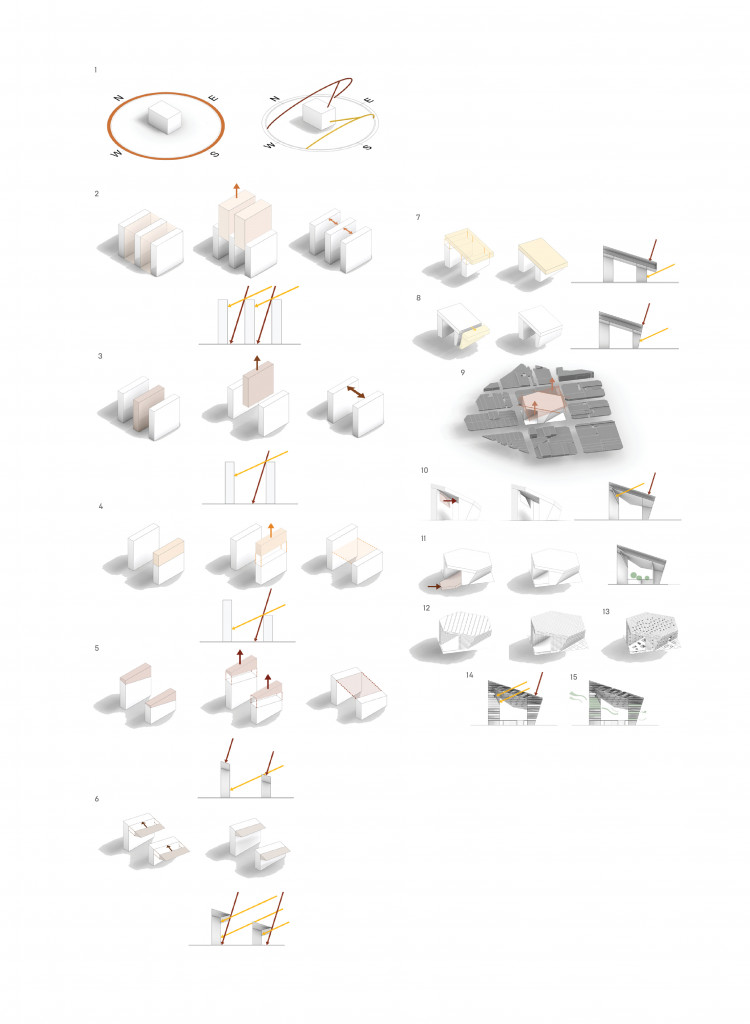
1- The cube’s starting dimension is 70 by 100 meters.
2- The block was divided into smaller elements to allow the exposed surfaces to receive natural light.
3- Two elements were kept to receive the maximum amount of light and public space is a place between them.
4- In order to receive more light during winter, the first block was subtracted so that the second block would receive sunlight rather than casting.
5- A cut was done in the roof perpendicularly to the angle of the solar radiation in order to harvest energy during summer.
6- A cantilevered was created on the roof to protect the southern façade from the summer radiation.
7- The two buildings were joined and connected with the roof to create a unified building.
8- The southern building was inclined following the angle of the sun due to stabilizing the structure and avoiding summer direct radiation.
9- The shape of the prototype was modified with a better connection to the plot of the site.
10- In Order to profit from maximum radiation, half of the façade of the second block has a perpendicular inclination to the angle of the sun during the winter season.
11- The 2 blocks were connected on the ground floor and create a public space and a market.
12- The floors create the horizontal lines of the grid for the façade and the roof.
13- The ground floor grid is continuous on the façade and the roof.
14- The grid will define the positions of the holes on the facade for ventilation and create green spaces for agriculture.
15- On the roof, the holes will follow the grid and the angle of the solar radiation during
winter to heat up the façade of the northern block. The grid will also help identify the
location of the green areas for water collection and the solar panels.
16- The grid will define the positions of the holes on the facade for ventilation and to create green spaces for agriculture.
Structure
The structure of the building works a wooden matrix-system that works reciprocally. The arrangement of the panels allows having interior spatial flexibility enabling the change of activities inside the building over the years. The structure provides for the wooden boards to be structural as elements of interior partitions allowing to save material.

Structural Matrix Top View
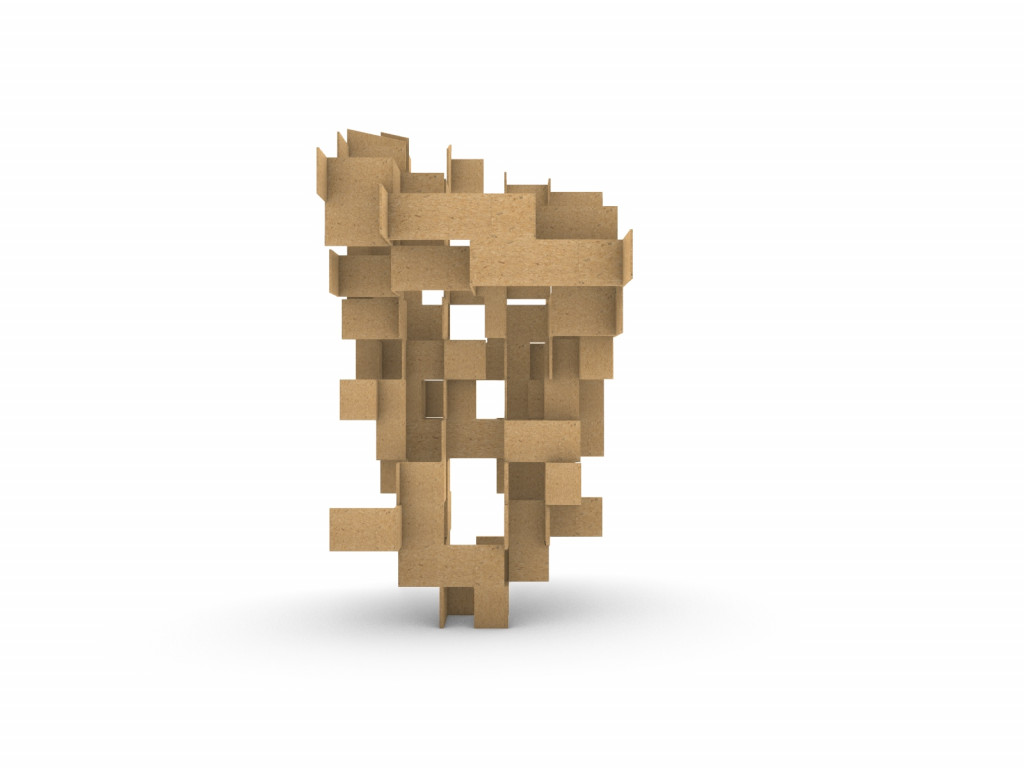
Structural Matrix Front View

Aggregation Matrix System
Envelope

Plastic is one of the main problems that the world is facing in terms of pollution and waste; however, it is an excellent material for insulation, waterproof, rot-proof and water resistance. For this reason, a modular system of a ceramic element with high thermal mass capacity and brick made of plastic is the best combination to build the envelope of the building.
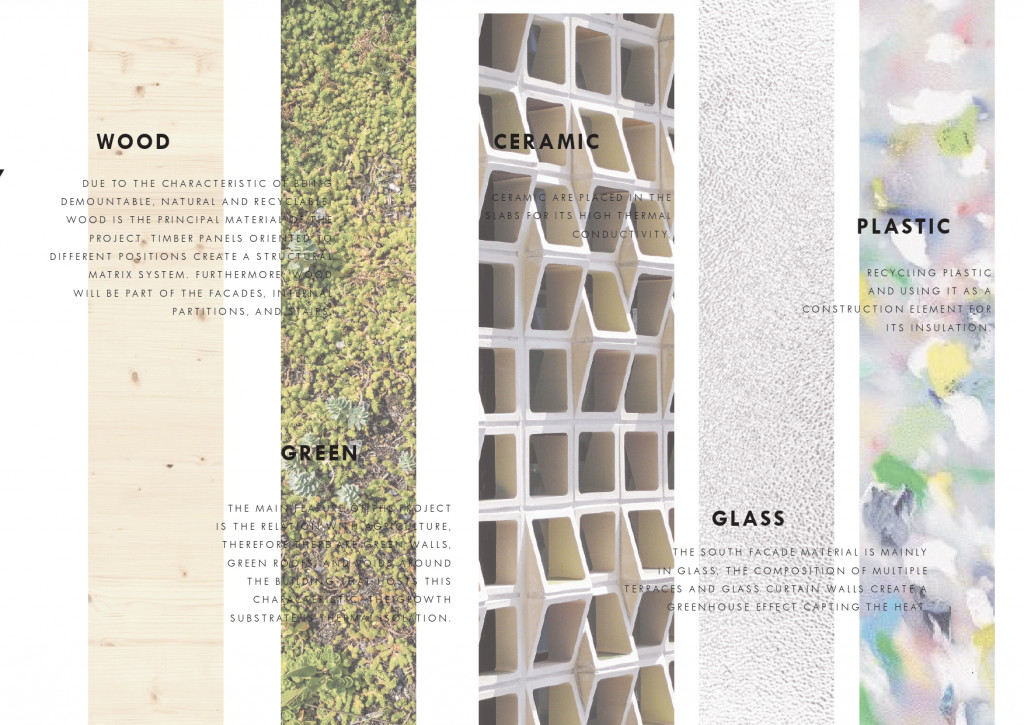
Materiality Palette
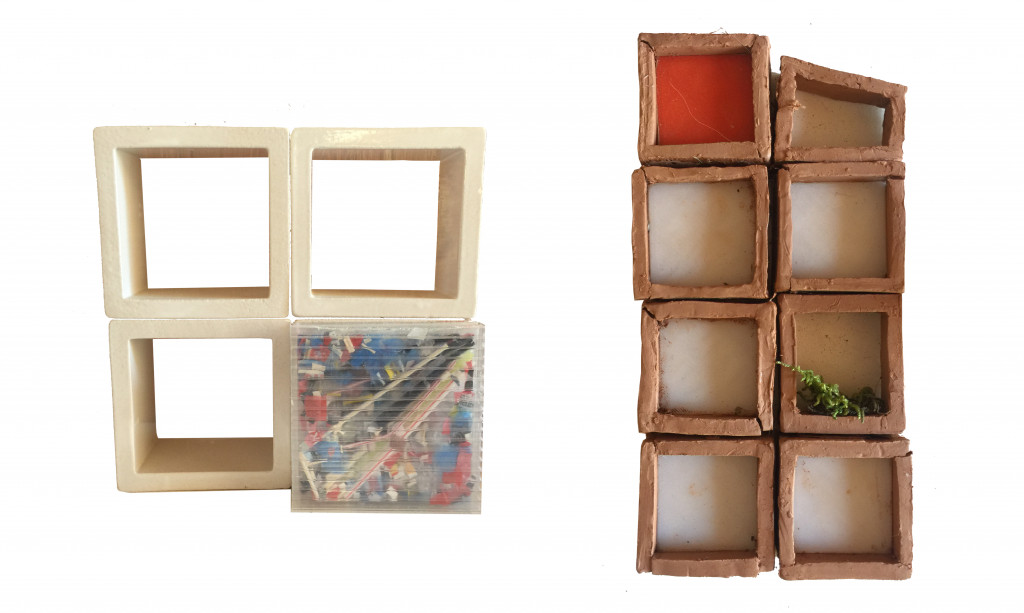
Ceramic + Plastic Brick Scale 1:1 / 1:10
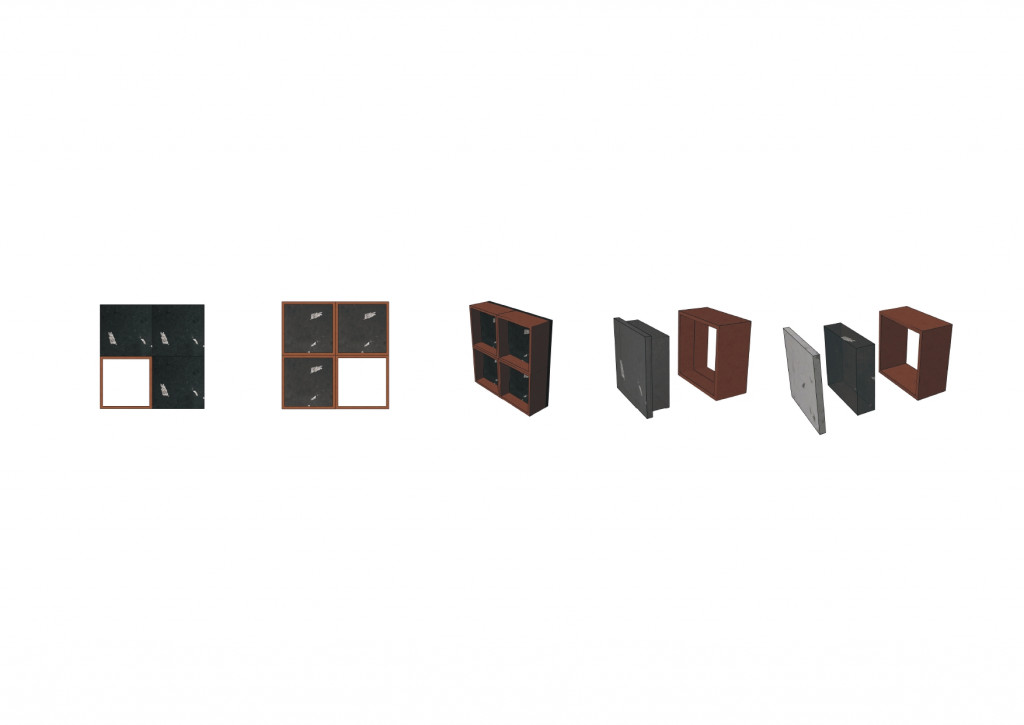 Modular Unity
Modular Unity
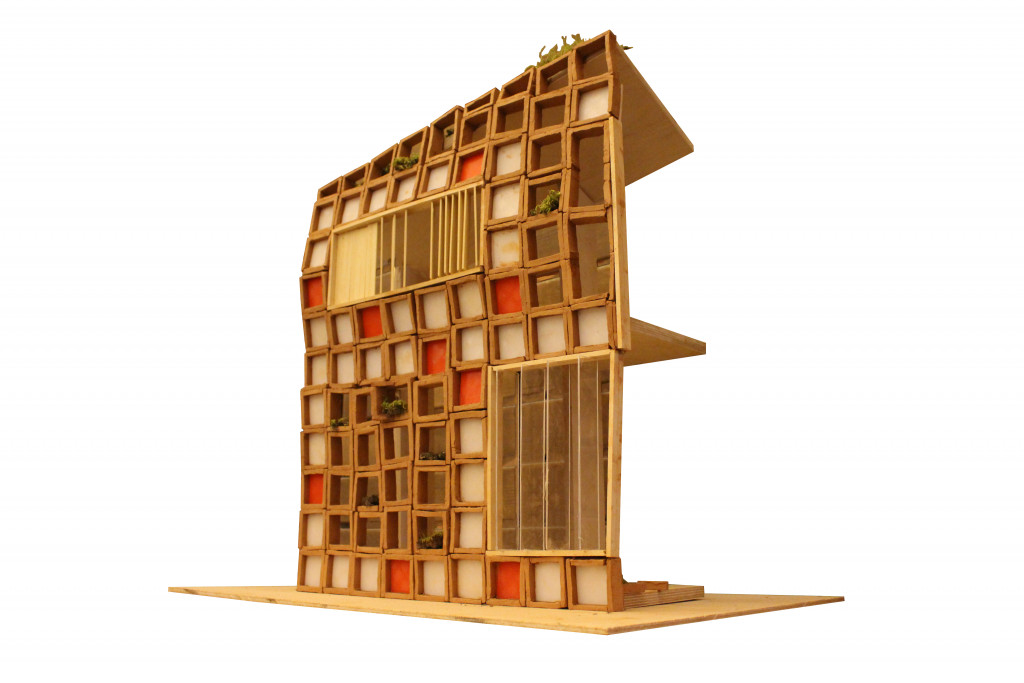
Facade Model 1:10
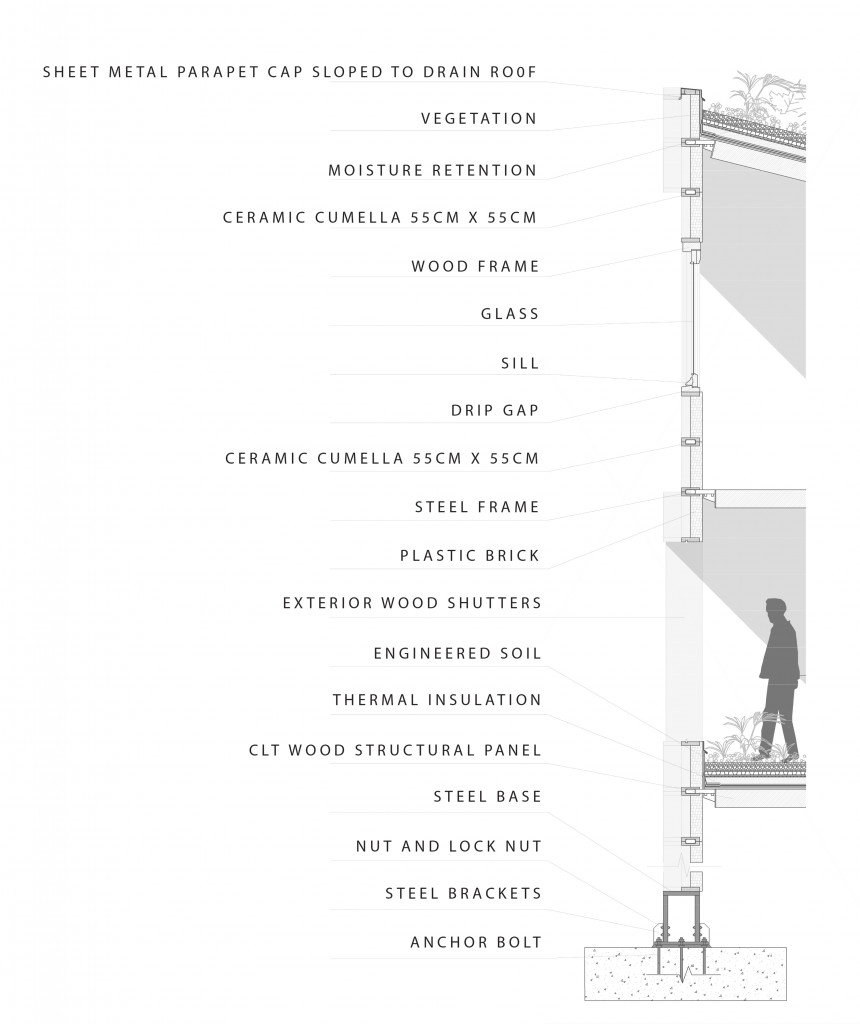
NorthFaçade
Façade Detail
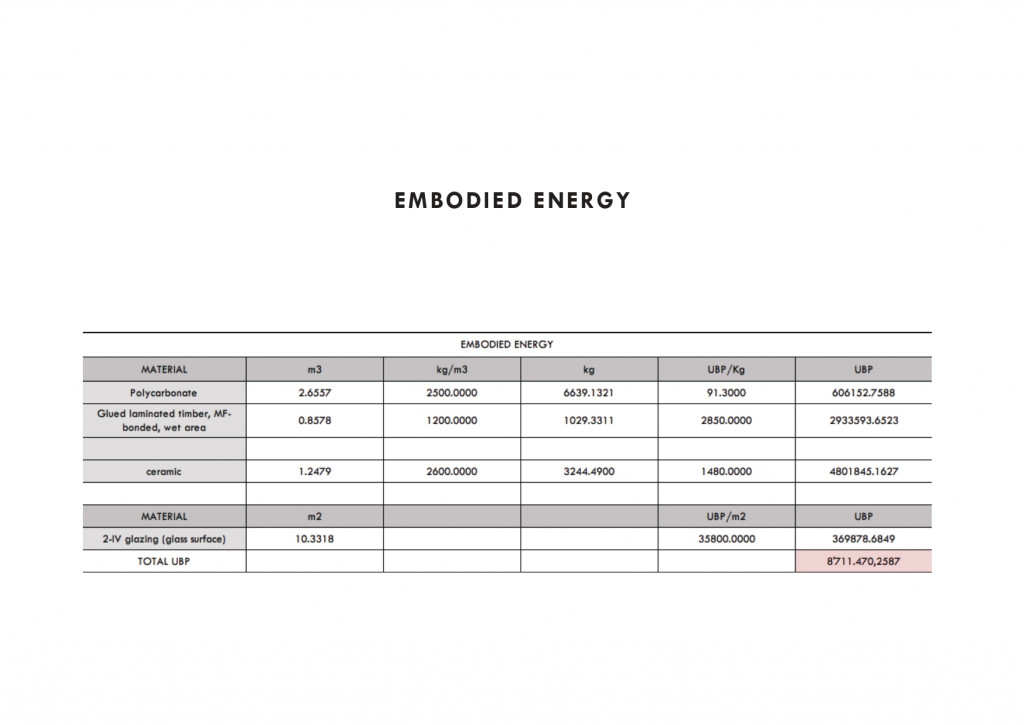
 Thermodynamic Analysis – Summer
Thermodynamic Analysis – Summer

Thermodynamic Analysis – Winter
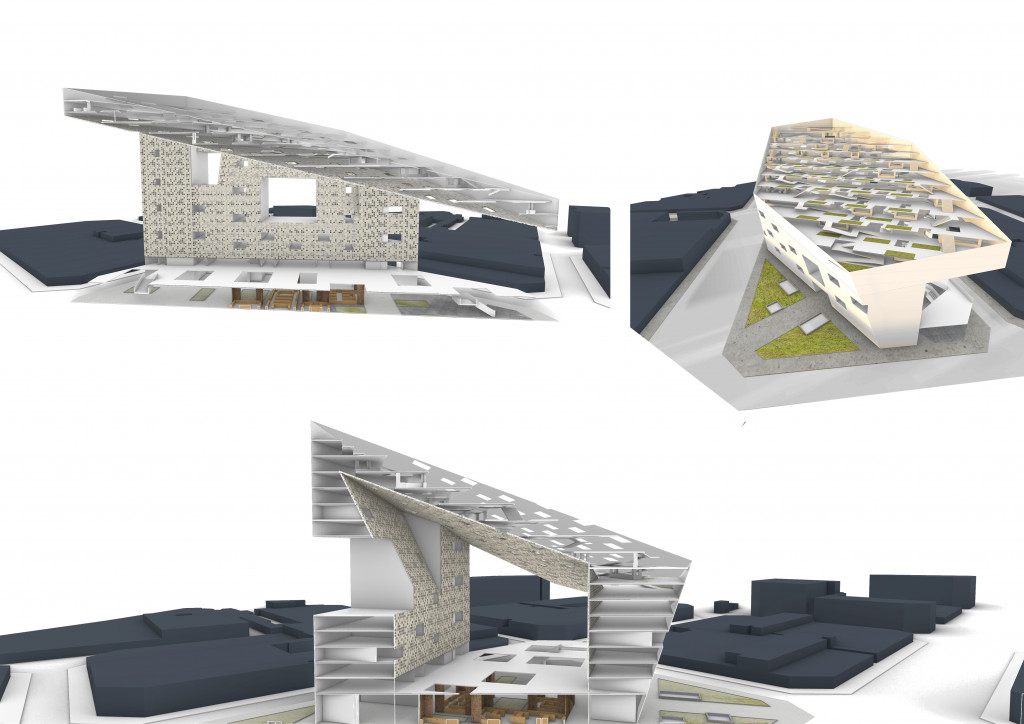
Program
Love Hybrid continues the experimentation of agriculture in modern urban scenarios by mixing a residence with a reality show. Nowadays we live in a consumerism culture where TV and broadcasting are recurrent worldwide; for this reason, having a reality show in an ecological building where plastic is one of the primary materials of the facade and the incorporation of dry toilets in an urban scenario are some ideas that can educate through television.

Water Cycle
The building introduced the role of architecture to mitigate the environmental circumstances that the world currently faces, one of them is the constant contamination of the water, for this reason, the proposal introduces dry toilets in an urban scenario. Bringing agriculture and introducing new ways to produce food within our home, the fertilizer and compost dry toilets provide are very easy to use them to the many gardens that are placed around the building.
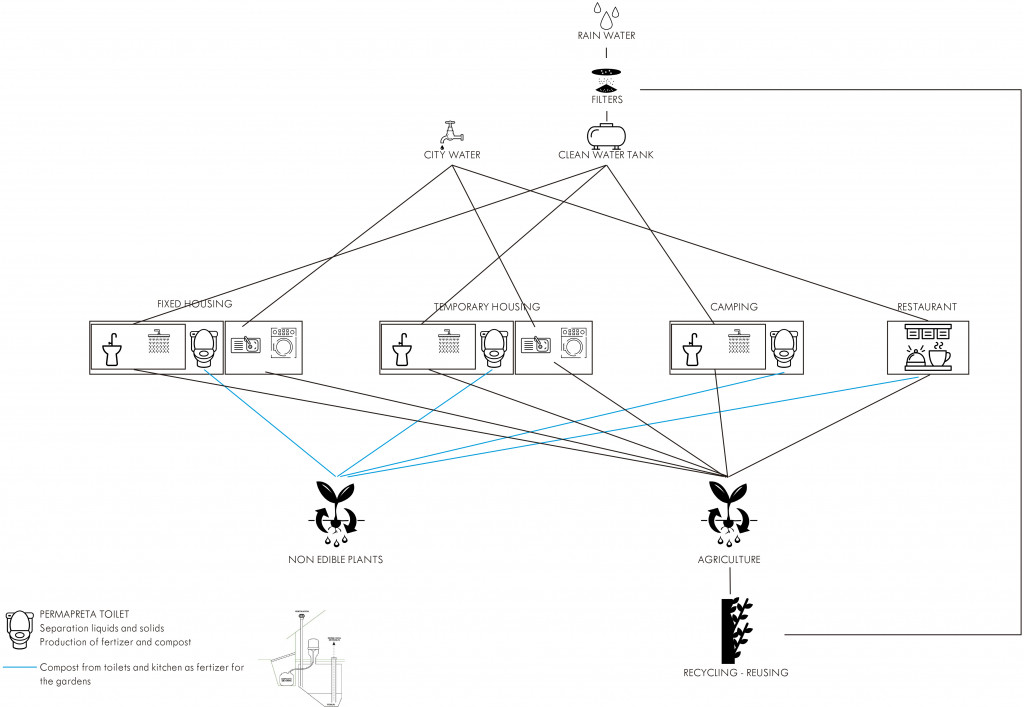
Thermodynamics
The final shape of the model was designed to minimize the summer sun exposure with an urban botanic roof that is also collecting water and to maximize the passive solar gain in winter with the helps holes on the roof.
The openings on the Façade were created for a better natural cooling and ventilating system. Those openings are used for gardening and are close during winter to keep the heat inside and create a green house.
The envelop was made out of ceramic bricks filled with a mold of plastic waste for better thermal mass and insulation of the interior space.
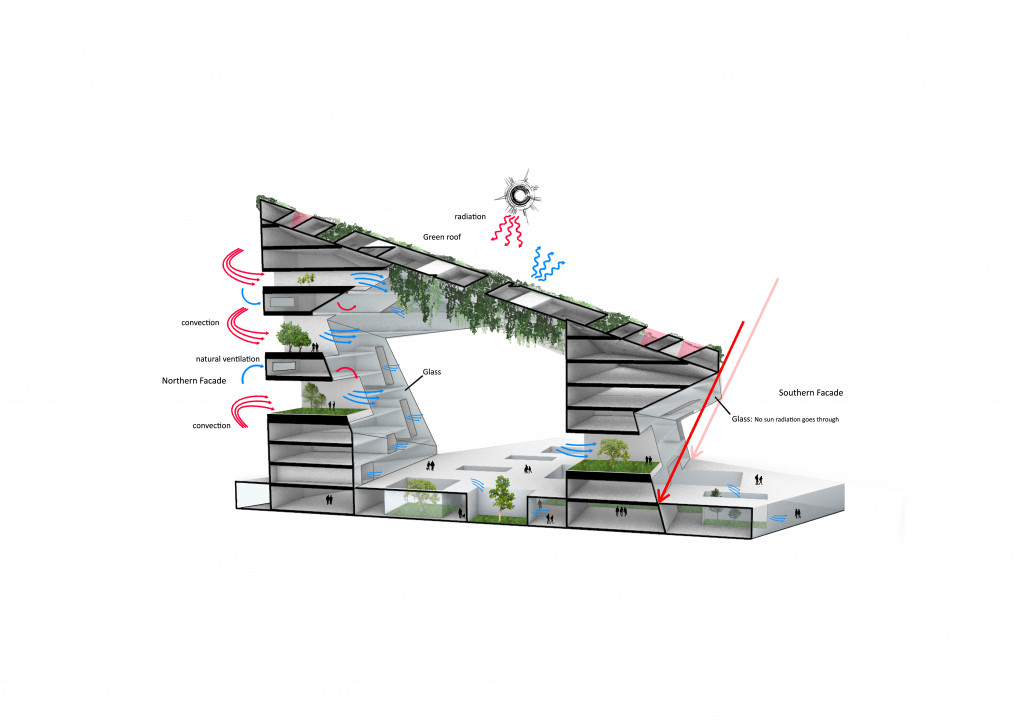
Summer Section
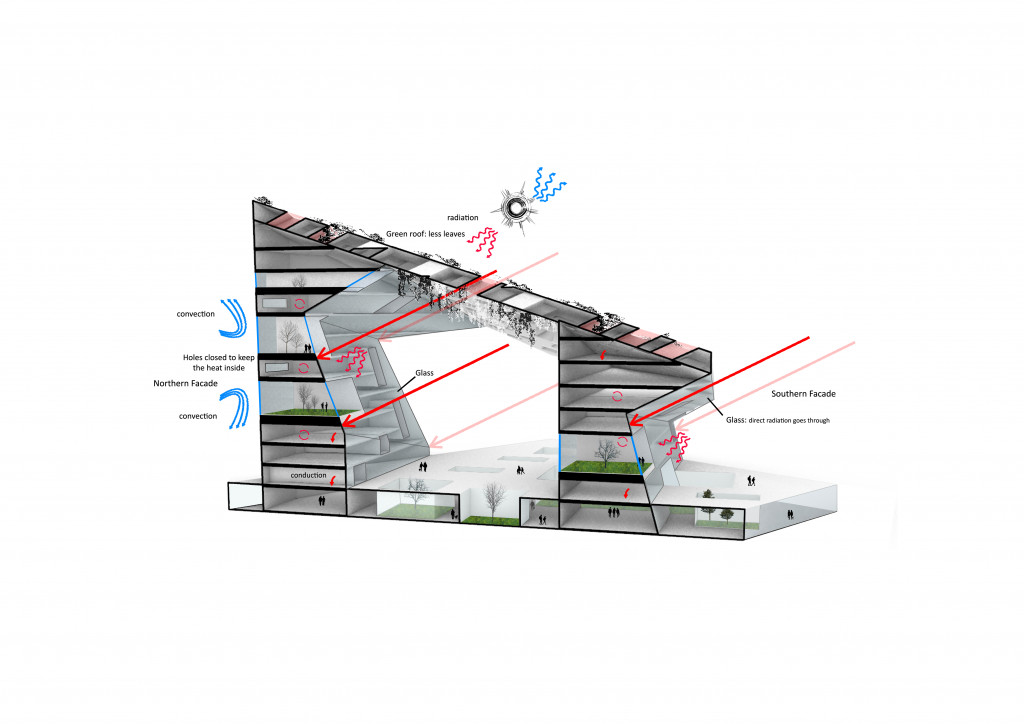
Winter Section

Perspective
Model Pictures
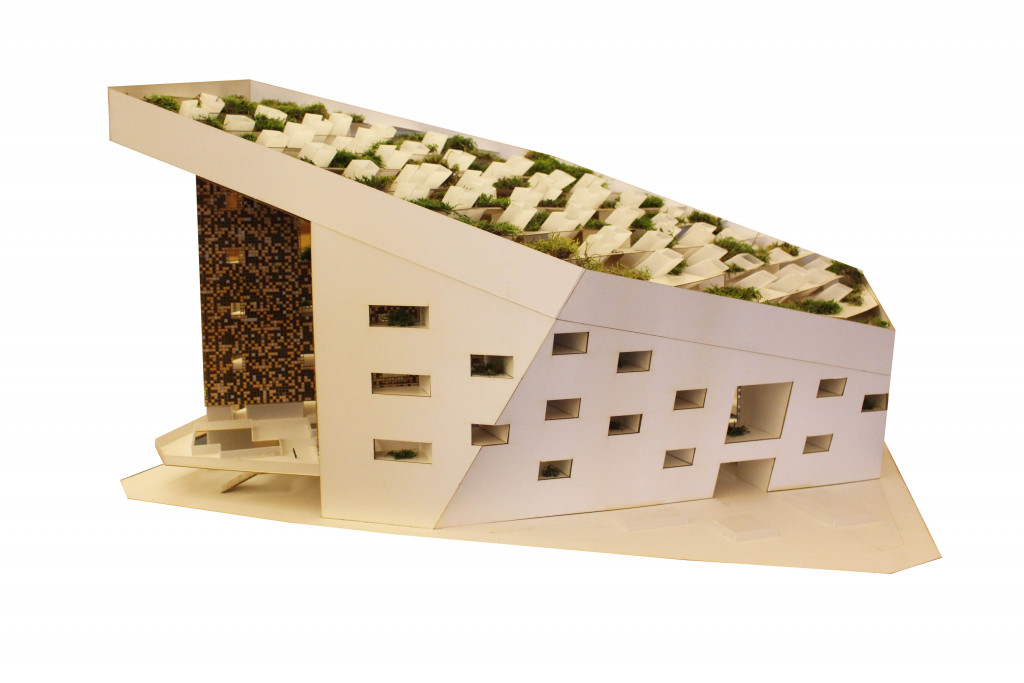
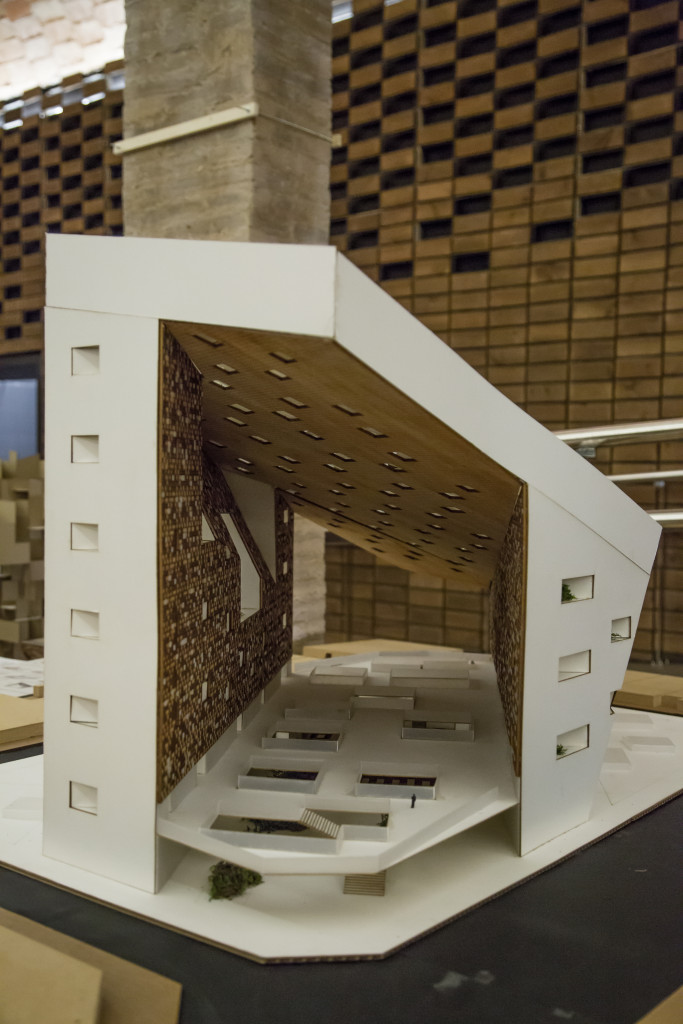
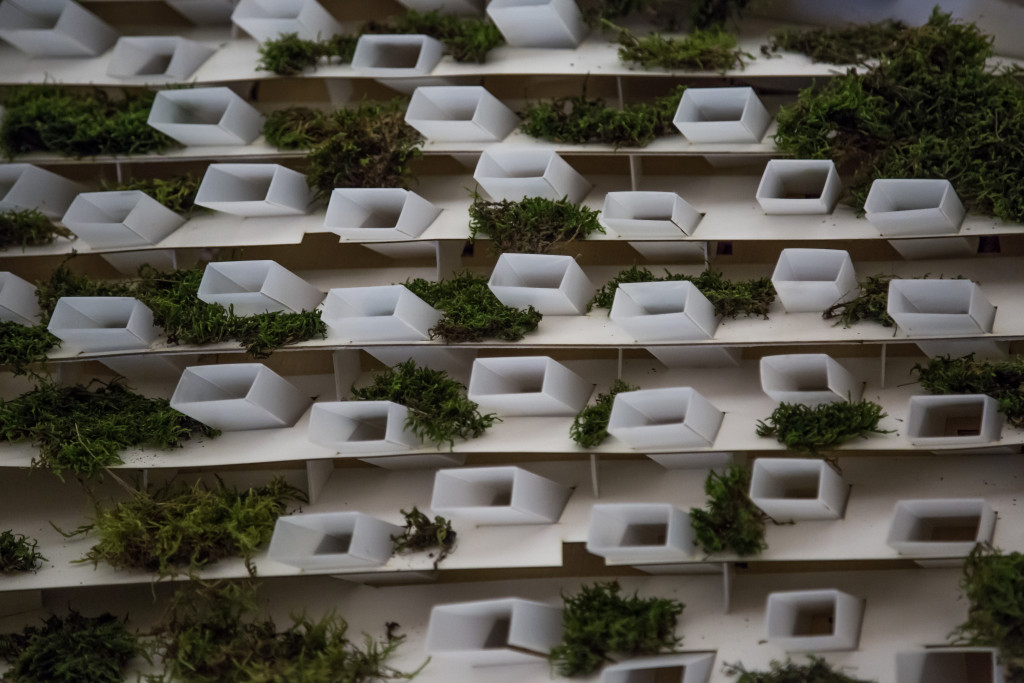
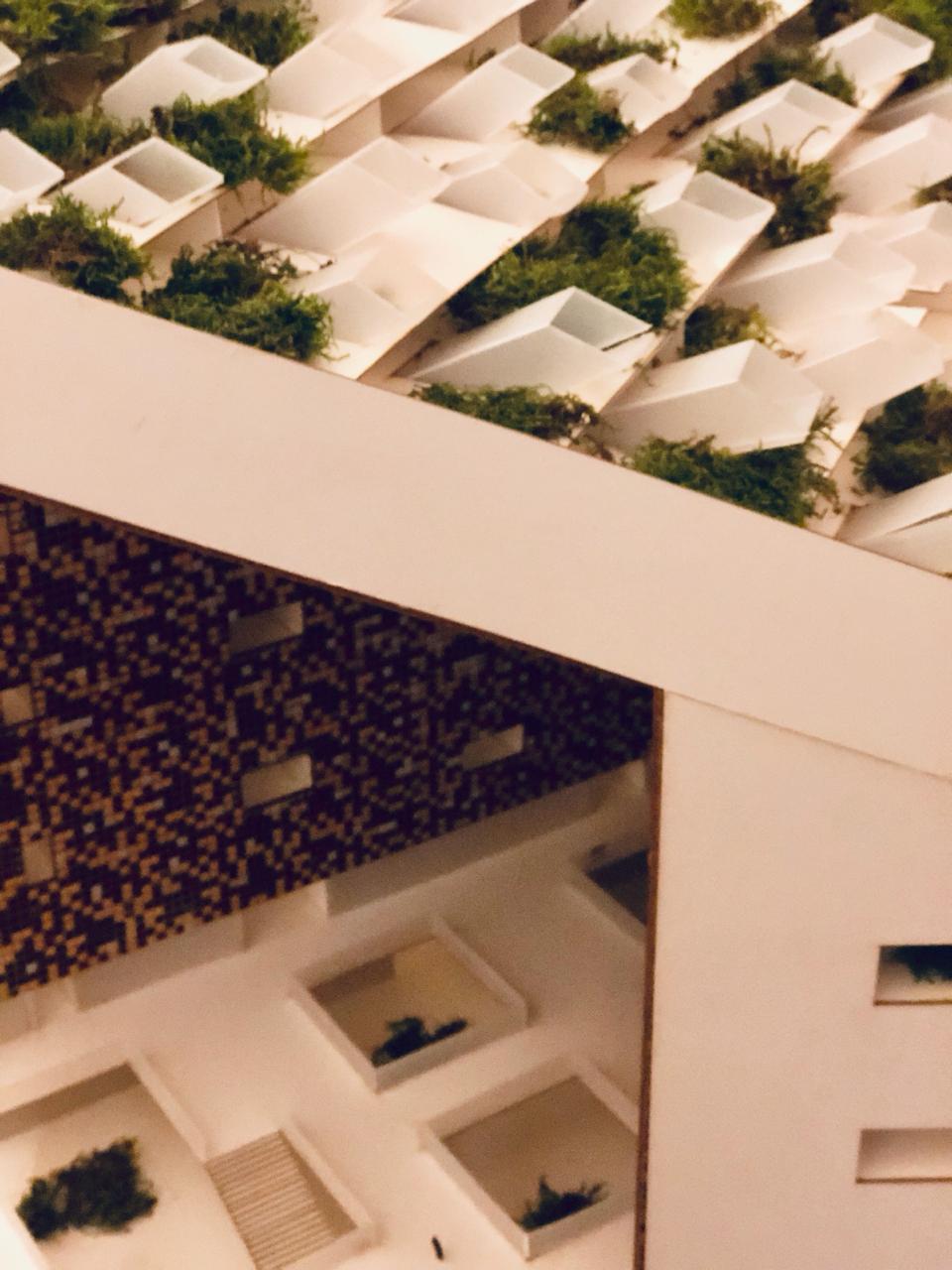
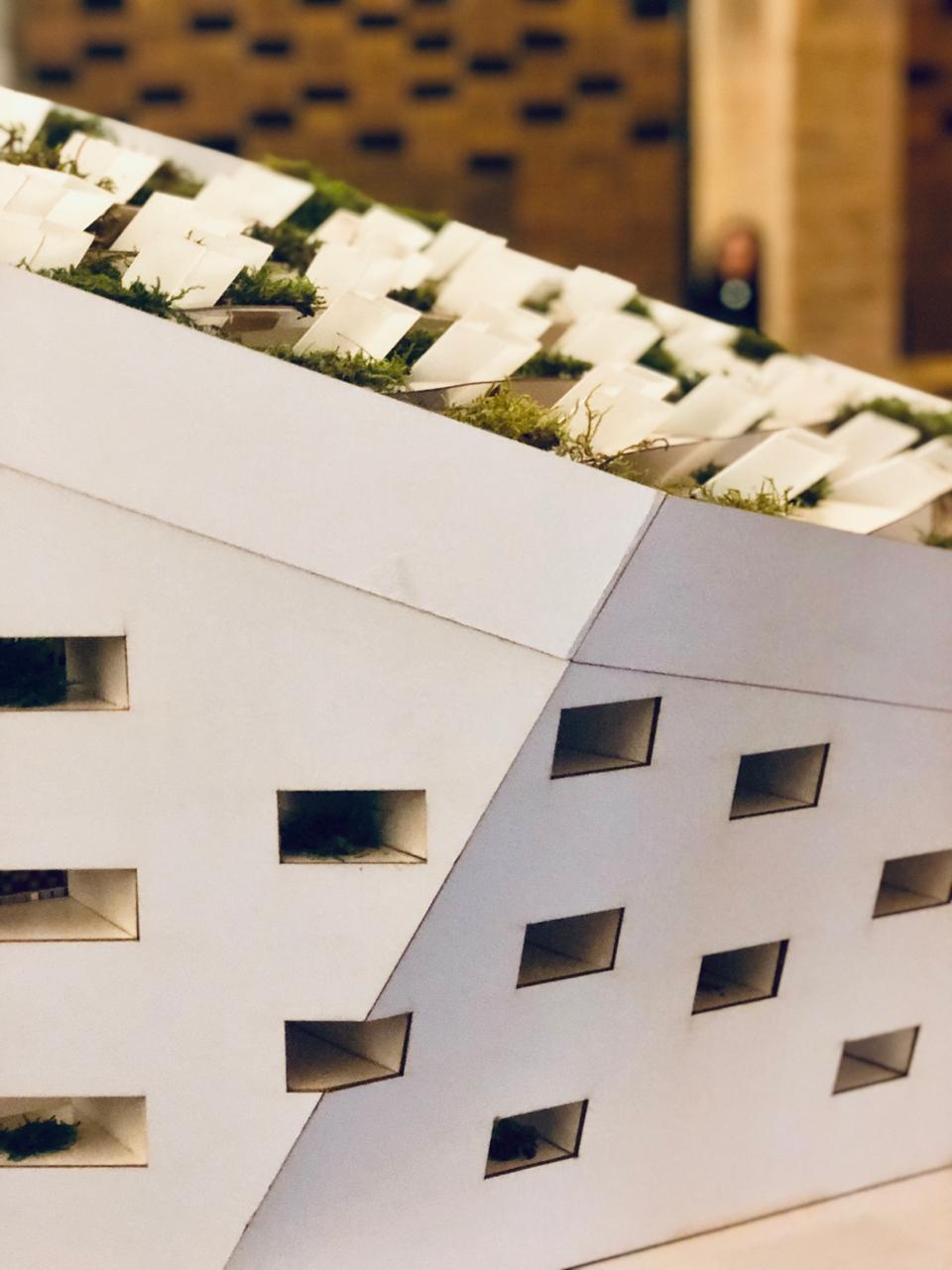
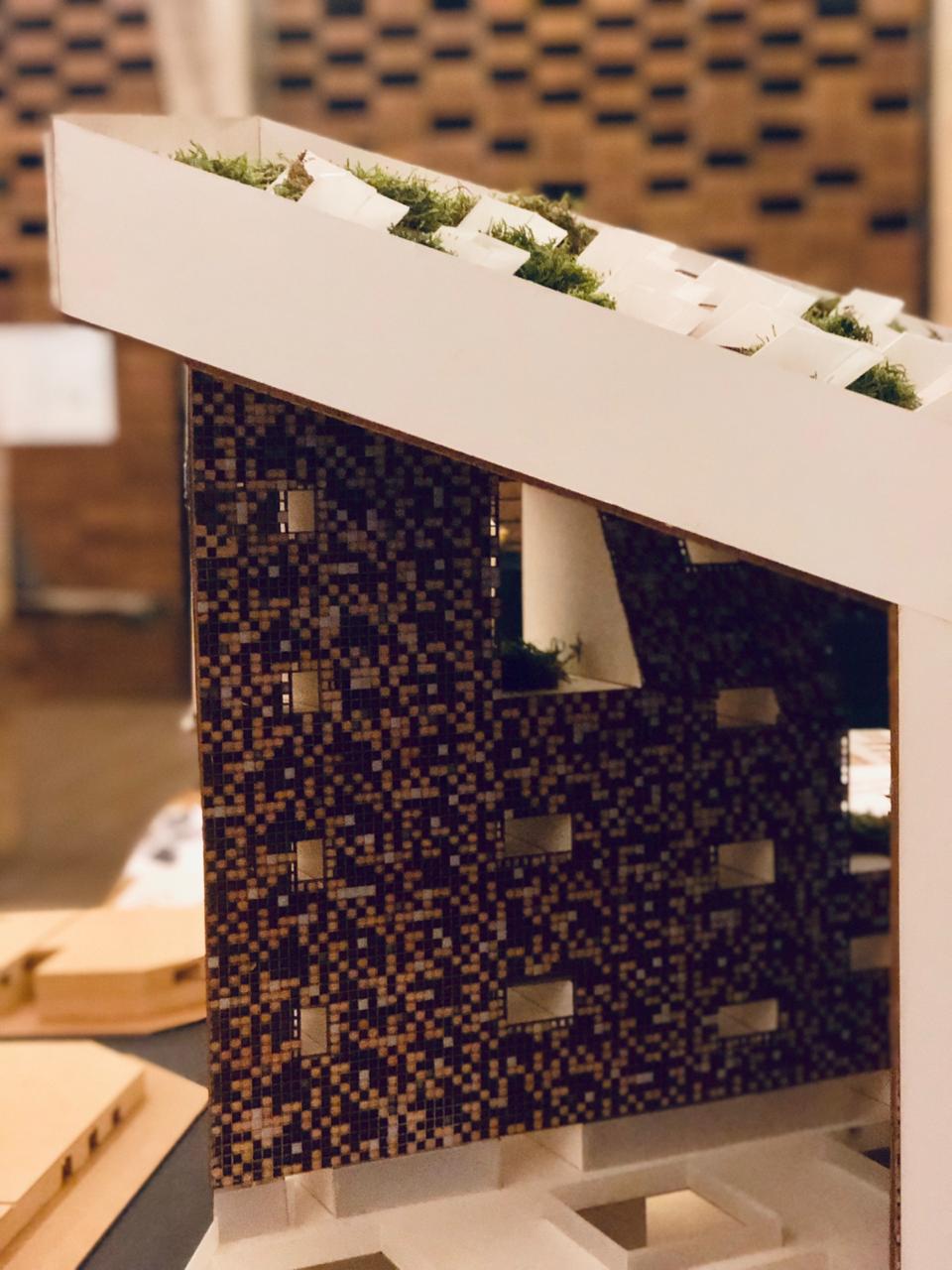
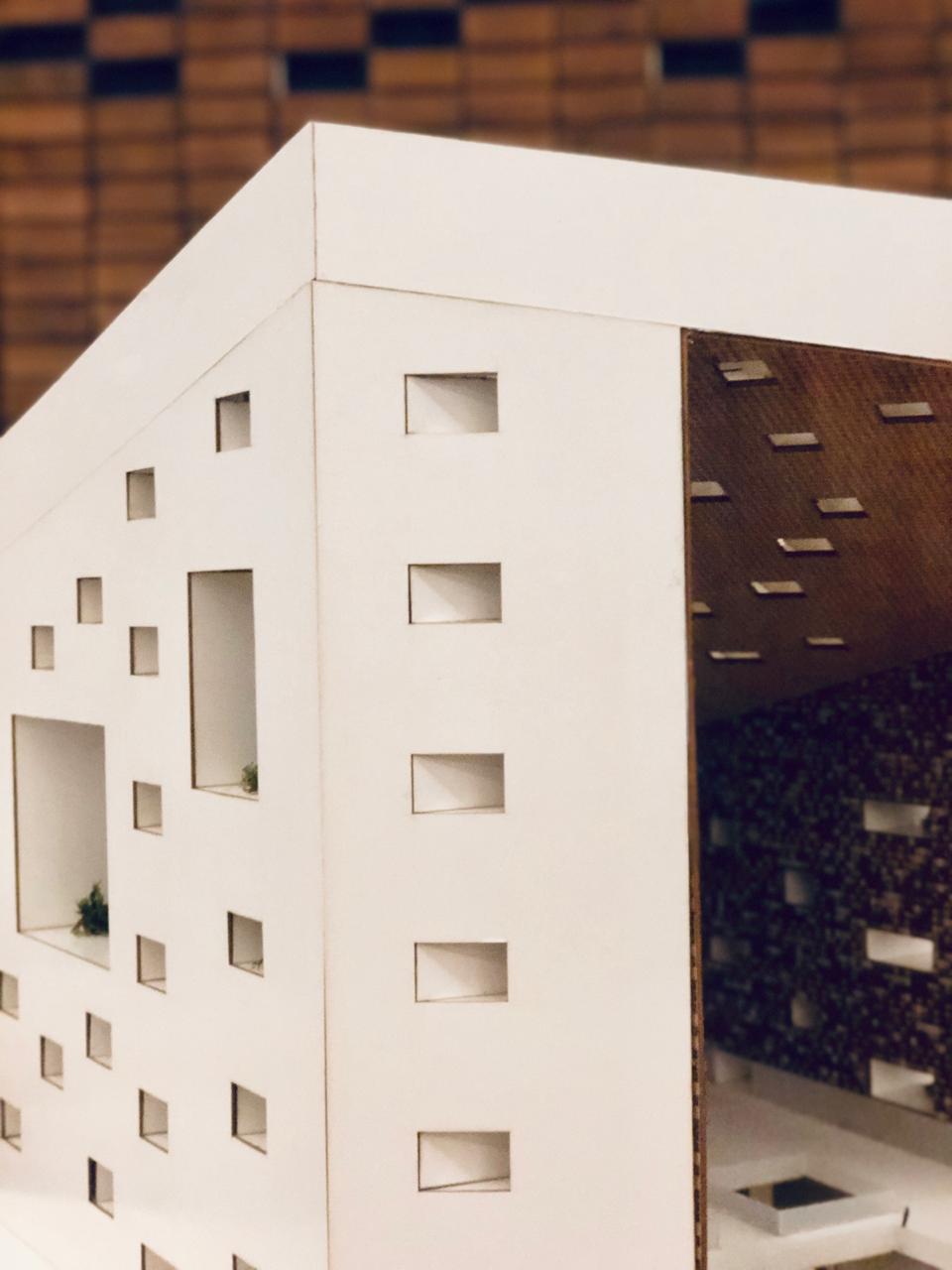
Project by Julianna Carmona and Kevin Matar
Master in Advanced Ecological Buildings 2018-2019